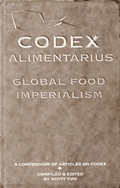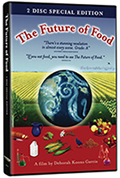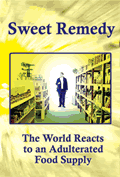HOW ONE SMALL AFRICAN COUNTRY MADE A BRAVE STAND AT CODEX
by
Attorney Scott Tips, JD
July 20, 2013
NewsWithViews.com
BRAVE BENIN

FAO Building
and Codex Meeting Place – July 2013
“There is no wealth but life.” - John Ruskin
Monday morning in Rome began as only summer mornings in that city begin, with cerulean blue skies blemished only by the merest wisps of clouds. An early, cooling breeze swept the streets as I made my way to the opening day of the 36th session of the Codex Alimentarius Commission meeting in Rome,this first week of July 2013, held once again in the Food and Agriculture Organization (FAO) building.
Vitamin and Mineral Values
Those who have been following the National Health Federation’s efforts at Codex since the mid-1990s already know that at the Codex Nutrition Committee meeting in Dusseldorf, Germany in 2009, the NHF singlehandedly launched the opposition that stopped the Australian delegation and others from “dumbing down” these Nutrient Reference Values (NRVs).[1]
Australia and its supporters had wrongly proposed that lower NRVs be adopted for certain important vitamins and minerals, including Vitamin C. For example, the “Proposed Draft Additional or Revised NRVs for Labelling Purposes in the Codex Guidelines on Nutrition Labelling” suggested reducing the Vitamin A NRV from 800 micrograms down to 550 micrograms, Vitamin C down from an already abysmallylow 60 milligrams to 45 milligrams, Thiamin down from 1.4 milligrams to 1.2 milligrams, Niacin from 18 milligrams down to 15 milligrams, Magnesium down from 300 milligrams to 240 milligrams, and so forth.[2]
These values are already at subsistence levels; and in order to enjoy optimal and robust health, most consumers need far more than the miserable amounts that Codex would parsimoniously dole out to them. Yet Australia and its supporters are so fixated on reducing the values even more that they have blinded themselves to the real science showing the absolute need for more nutrient intake, not less.
Fortunately, thanks to NHF and its key supporters India and Iraq at the 2009 meeting, the Committee wisely chose not to move forward with any of those proposed NRVs and instead held the work back for further review and study. Nearly four years have passed since we first stopped these NRVs from being adopted, and each year of non-adoption has been a victory for NHF, and for you. Unfortunately, that winning streak has come to a dead stop.
It started with last year’s Nutrition Committee meeting in December 2012, where three women (the Chairwoman and the Australian and U.S. delegates) decided to split the vitamins and minerals into two groups: One that was considered “suitable” for adoption; and a second group that was considered “unsuitable” and would need further work.[3] The Chairwoman ignored the strong objections of five delegations (Malaysia, Iran, South Africa, the International Dairy Federation, and the NHF) to decide that “consensus” existed and the “suitable” list could go to the Commission for approval.[4]
Seven Months Later
It has continued with the Commission meeting this first week of July. The cooling breeze that had helped propel me on my way to the meeting became instead a steady stream of hot air as Codex delegates discussed the “suitable” NRV standards for vitamins and minerals. It was one of many such standards and guidelines being considered for adoption by the Commission, but it became one of the most contentious.
This time Australia was completely silent. In a kind of hidden tag-team maneuver, it was now the United States’ and the European Union’s turn to push forward the worthless NRV standard. The U.S. delegate said that it was in favor of the standard being adopted at Step 5/8 (i.e., just short of final adoption at Step 8), the EU said it supported the United States, as did the ever-eager American lapdogs Chile and Costa Rica. The Chairwoman of the Codex Committee on Nutrition and Foods for Special Dietary Uses (CCNFSDU), Pia Noble, was asked her opinion and of course said that the CCNFSDU had carefully considered the science and recommended its adoption. This was a lie. Seven months earlier, three women had pushed the standard forward while three women (and NHF and IDF) had opposed it, all while the rest of the Committee sat on their hands. Hardly “careful consideration.”
The NHF naturally spoke up in opposition to approval of the NRVs, arguing that they called for a reduction across the board of 20% to 66% of the B vitamin NRVs, increased Calcium NRVs in the face of a reduction in Magnesium NRVs (the exact opposite of what modern nutrition tells us should be done), and promotes, at best, subsistence nutrition when optimal nutrition is called for here. “These are standards that would only allow consumers to put one foot before the other, barely avoiding slipping into the grave, as they shuffle through life. Consumers deserve better, they deserve optimal nutrition that allows them to maximize their potential and quality of life,” I said to the delegates.
Only the International Dairy Federation (IDF)[5] spoke up alongside the NHF against advancing the NRV standard, based primarily upon the increase in the calcium NRV to 1000 milligrams, which would result, IDF argued, in the curious paradox of milk no longer being able to be promoted as a “rich source of calcium.” The delegates seemed unmoved by this argument.
So, seeing no country delegations supporting the NHF and IDF position, Chairman Sanjay Dave (pronounced “Dah-vey”) was on the verge of declaring the vitamin-and-mineral NRVs adopted at Step 5/8 when NHF interrupted with a request for the floor.
“Mr. Chairman, NHF would propose that since the Commission seems determined to advance the NRV standard here at least the calcium portion of the standard be withheld and sent back to the Committee to be considered along with magnesium. Magnesium and calcium are twin minerals and it is absurd to determine one value without determining the other at the same time. They should not be separated like this.”
When Chairman Dave asked if there were any country delegations supporting NHF’s proposal, there was a long silence as he slowly looked around the room. Papers rustled and stirred as some delegates shifted uncomfortably in their seats. I looked around the room too and wondered what had happened to our previous supporters.
Malaysia? Silence.
Russia? Nyet.
Iran? More silence.
South Africa? Nothing.
India?
Anybody? I could hear crickets chirping, as I slowly twisted in the wind, unsupported.
Dr. Yacouboutoure to the Rescue
“Benin please.”
My head snapped around to see where the delegation of Benin was seated. The Chairman had just recognized Benin’s request for the floor. What were they going to say?
“Benin supports the previous delegation, NHF. We agree with them that Codex cannot consider calcium alone without taking into account magnesium levels, as these two minerals go together. Calcium should be withheld from the standard here and sent back to the Committee.”
It was Dr. Idrissou Yacouboutoure, the smartly dressed and well-spoken head of delegation and Director of Benin’s Ministre Agriculture, ElevageetPêche. Out of all of the delegations with whom I had spoken about this issue, here was one with whom I had not. NHF’s sole supporter among the country delegations. Talking good sense.
But no one was listening …. Dr. Yacouboutoure spoke good sense, but minds were already made up – mostly to sit on the sidelines. That is what really decides most issues at Codex, unfortunately: the Uninterested Majority. Or, maybe some are interested but the debate at Codex is proceeding too quickly for them to stop and check with their bosses as to which way side they may take on an issue. Fortunately, Dr. Yacouboutoure was his own boss and could decide on the spot what was the right thing to do.
“Do you want to reserve your objection for the Report?” the Chairman asked Benin, clearly signaling that Benin and NHF’s effort to at least cut calcium from the herd had failed.
“Oui, Monsieur Président,” replied Dr. Yacouboutoure, clearly signaling in return his country’s displeasure with the result.[6]

Scott Tips
and Dr. Yacouboutoure, July 3, 2013
The worthless NRV standard was, in this typical Codex fashion, advanced to the next rung without any real consideration of what was being done or the ill effects that it would visit upon consumers. A very few co-conspirators – who had orchestrated amongst themselves their plan to mislead consumers worldwide by foisting upon them worthless vitamin levels as the “recommended daily requirement” – had succeeded, thanks largely to those who stood by and did nothing while consumers were mugged and left for near dead. The EU, which had been so steadfast at protecting consumers from the dangers of ractopamine residues, aluminum, and GM foods at previous Codex meetings, went Broken Arrow at this meeting, miserably deserting the best health interests of its 500 million citizens without even an explanation.
What delegations such as the EU fail to understand is that there are two main ways to harm human health. One is to flood our bodies with toxins and other contaminants, such as ractopamine, aluminum, and GM foods; the other way is to weaken the body and its immune system through sub-optimal nutrition, thereby making humans much more vulnerable to lower levels of toxins and contaminants. It is merely two sides of the same coin; but in the EU’s one-dimensional world, they are blind to the coin’s flip side.
The fight over these NRVs will go on, at this November’s CCNFSDU meeting. As long as there are intelligent, outspoken delegations such as Benin’s, there will be strong obstacles to adopting any standards that will harm consumers.
Saturated Fats vs. Polyunsaturated Fats
Immediately prior to the vitamin-and-mineral NRV fight, the Commission debated adopting a Nutrient Reference Value for saturated fatty acids that would limit them to supplying no more than ten percent of the consumer’s daily energy needs. Trapped as they are in 1970s nutritional science, many Codex delegates think saturated fats are nothing but heart attacks waiting to happen. Such ignorance has pushed Codex into adopting this limited dietary role for saturated fats while favoring more dangerous vegetable oils.
Malaysia, the Philippines, IDF, and the NHF all opposed setting too low of an NRV for saturated fats, with NHF arguing that more strokes and nervous-system disorders would result. The Commission, however, adopted the NRV over our objections.
The Codex Strategic Plan
After much discussion, the Commission adopted a new six-year strategic plan for the years 2014-2019, which emphasizes more food controls, standards and guidelines for “consumer protection.” Nowhere appear the words “optimal health” or even “promoting nutritious food.” With the collective power of its bureaucratic mindset having already laid waste to consumer nutrition like Attila the Hun descending upon Europe, Codex anticipates continuing the tradition for the next six years.
Fortunately, just when it seems as if the dimmest light is about to go out, Codex startles and surprises us. At one point, the Latin American countries gathered together and sallied forth in an attempt to limit consumer concerns only to matters of protection of their health. They were sharply routed and defeated. So, the new strategic plan retains at least some consumer-friendly breadth to it.
“Keep Doing God’s Work”
The week-long session of the Codex Alimentarius Commission ended Friday evening at 8:30 p.m.; and as I wearily shut down my laptop and was putting away my piles of papers and writings, many delegates filed past me on their way home. One, a former Chairperson, came up to me, took my hand, and kindly encouraged me with the hortatory words, “Keep doing God’s work.”
Since the Codex meeting ended, I have had ample time to reflect upon those simple but powerful words of encouragement. At the same time, playing in the background, the mainstream media trumpets the many health successes of Codex during its 50 years. And to be fair, there have been some. But any Codex successes have been eclipsed by the failures – such as the NRV standard that reduces vitamin-and-mineral levels from ridiculous levels to worthless levels.
| Subscribe to the NewsWithViews Daily News Alerts! |
As it celebrates its 50th year of existence, Codex focuses upon its structure and its output, the abundant standards and guidelinesthat it has created and disseminated. It forgets, however, that its most important structural underpinnings are the delegates themselves. Without adequate awareness and knowledge of health, and a true desire for health, by the delegates, all the standards and guidelines in the World will be worthless because they will have sprung forth out of ignorance and disinterest.
Sadly, with the exception of Benin and a few precious others, the delegates simply do not “live” nutrition. And as the jazz saxophonist Bird once said, “If you don’t live it, it won’t come out your horn.”
� 2013 - Scott Tips - All Rights Reserved
Footnotes:
1.
Not to be confused with Maximum Upper Permitted Limits, NRVs are nothing
more than souped-up RDAs. These are numerical values assigned to specified
nutrients that will supposedly cover 98% of the population’s nutritional
needs for that nutrient. By referring to the NRV for a vitamin or mineral,
the consumer is supposed to know whether he or she is getting an adequate
intake of that nutrient, even if, as in the case of Vitamin C, 100%
of the NRV is defined as 45 milligrams! These values are claimed to
be set according to rigorous scientific evidence; but, in reality, “science”
at Codex levels is often nothing more than a flimsy set of assumptions
and erroneous conclusions cobbled together to justify keeping consumers
“safe” from “dangerous” vitamins and minerals.
2.
The proposed Codex NRVs are: Vitamin A (dropped from 800 mcg to 550
mcg); Vitamin D (5 mcg or 200 IUs); Vitamin E (8.8 mg); Vitamin K (60
mcg); Vitamin C (dropped from 60 mg to 45 mg); Thiamin (dropped from
1.4 to 1.2 mg); Riboflavin (dropped from 1.6 mg to 1.2 mg); Niacin (dropped
from 18 mg to 15 mg); Vitamin B6 (dropped from 2 mg to 1.3 mg); Folate
(raised to 400 mcg); Vitamin B12 (2.4 mcg); Pantothenate (5 mg); Biotin
(30 mcg); Calcium (raised from 800 mg to 1000 mg); Magnesium (dropped
from 300 mg to 240 mg); Iodine (150 mcg); Iron (14.3-43.1 mg depending
upon bioavailability); Zinc (dropped from 15 mg to 3.6-11.9, depending
upon bioavailability); Selenium (30 mcg); Phosphorus (700 mg); Chloride
(2.3 grams); Copper (900 mcg); Fluoride (3.5 mg); Manganese (2.1 mg);
Chromium (30 mcg); and Molybdenum (45 mcg).
3.
See CCNFSDU document number CX/NFSDU 12/34/8.
4.
Note that in 2009, CCNFSDU Chairman Grossklaus had found a lack of consensus
with only four delegations opposed, as compared with five here.
5.
In my opinion, the IDF is one of the good industry groups in frequent
attendance at Codex meetings. While of course promoting its industry’s
interests, as it should, IDF has never been known to be untruthful or
to take unfair advantage. In fact, in many instances, IDF has spoken
up for consumer interests as well as the dairy industry’s.
6.
For those of you who actually read the endnotes, and who care, I would
encourage you to convey your thanks to Dr. Yacouboutoure (preferably
in French, but if not, English will suffice) by writing him a brief
thank you e-mail at: iyacouboutoure@yahoo.fr















 Share
This Article
Share
This Article






